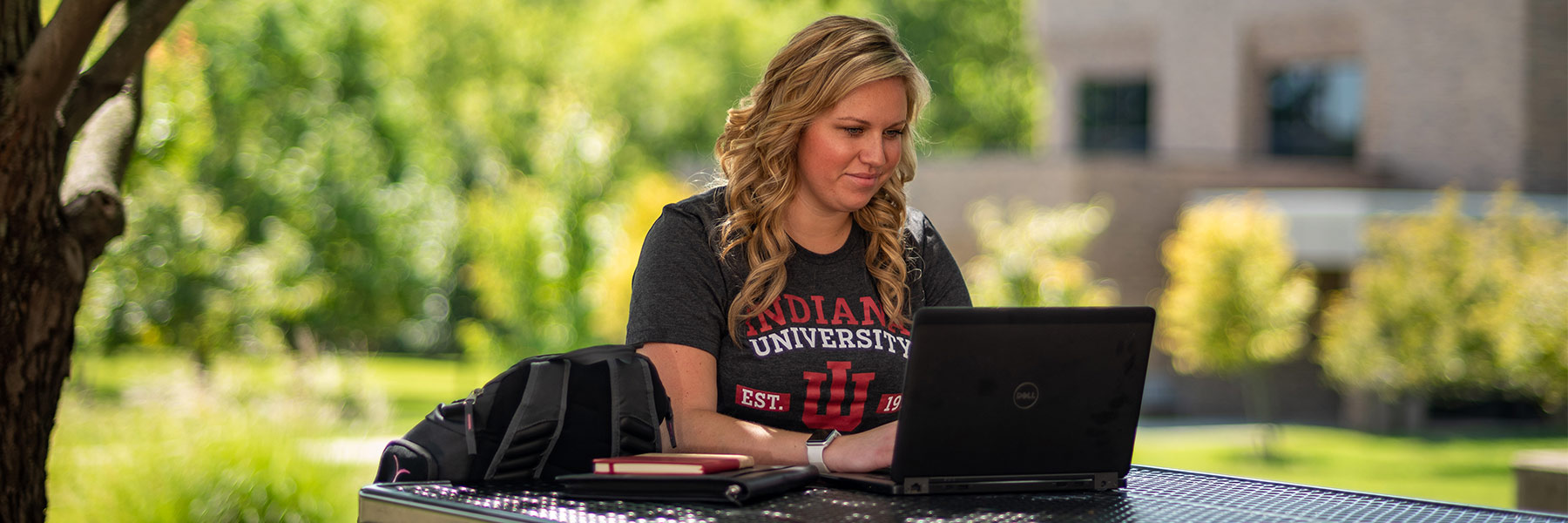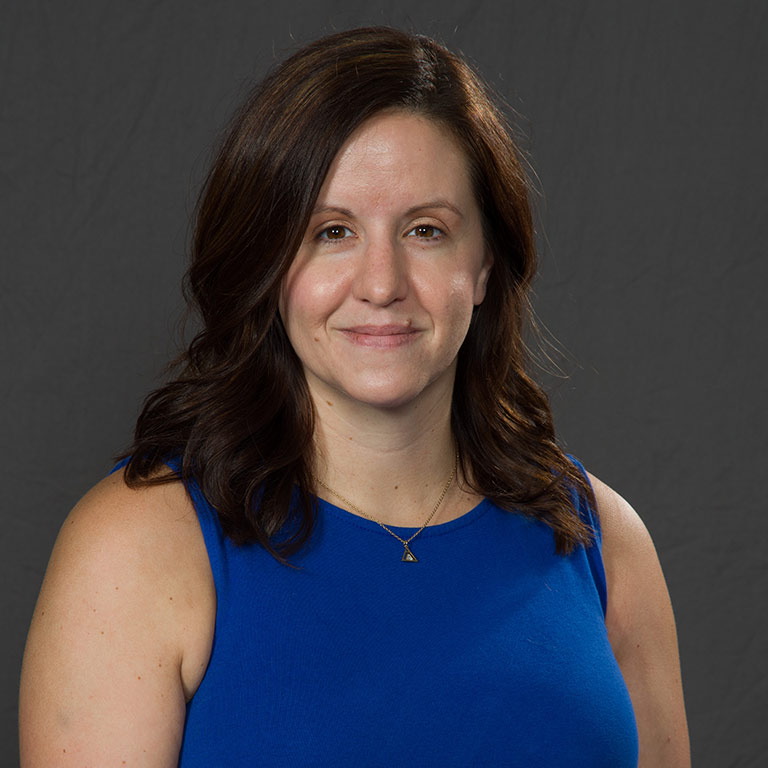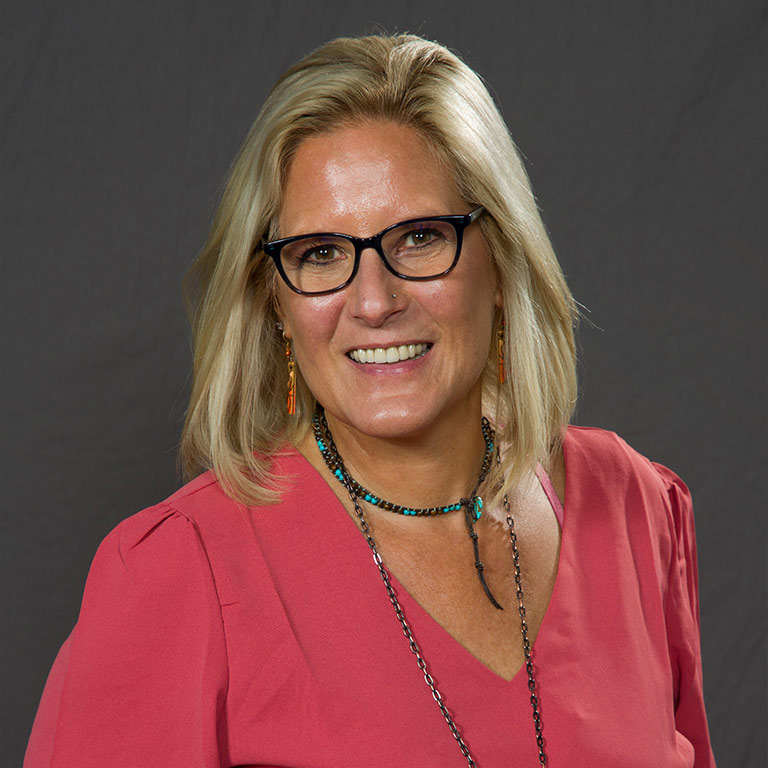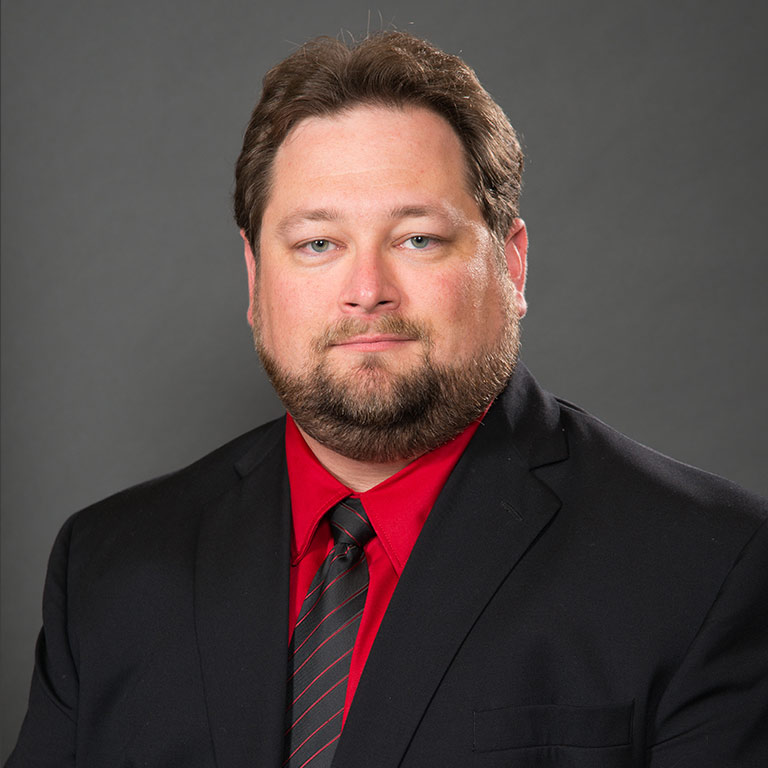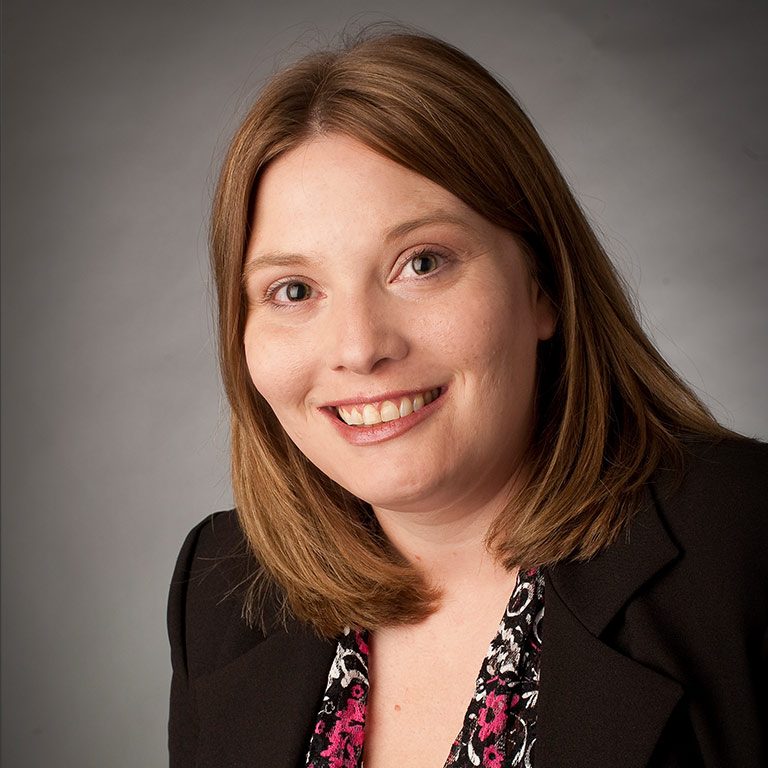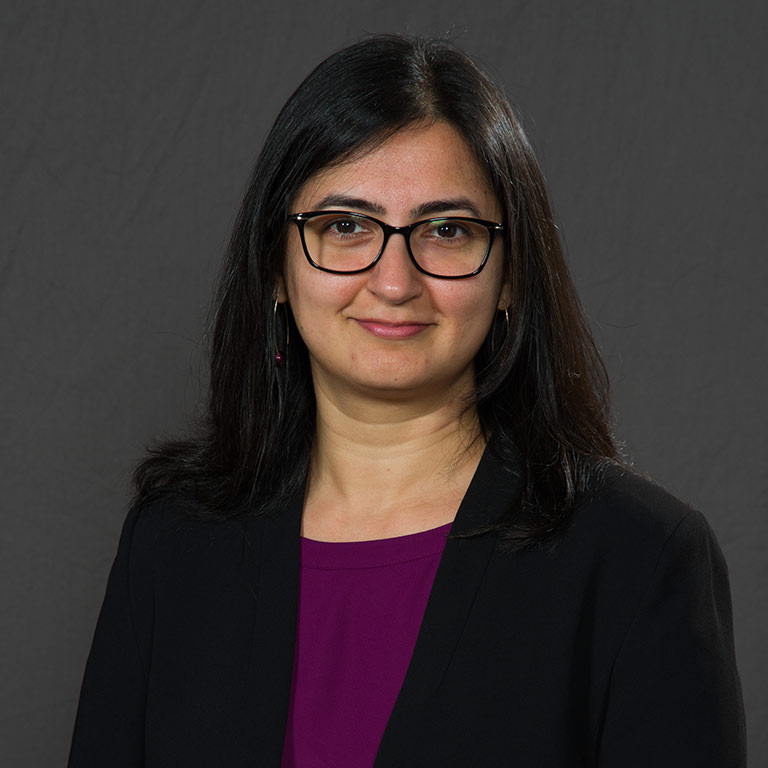Stephanie Whitehead is the director of the Center for Faculty Development (CFD) at IU East. The center provides resources and online teaching support for faculty. Whitehead is also an associate professor of criminal justice and she is a certified Quality Matters instructor, a nonprofit organization that provides the gold standard for certifying the quality of online courses and programs.
During the extended spring break the Center for Faculty Development has worked with faculty to move face-to-face courses online. The center also provided support for other centers across Indiana to host webinars and contribute to Keepteaching.iu.edu , a resource for faculty provided by the Teaching Center Consultants at IU.
"We keep reaching out to faculty with reminders of webinars, best practices, and other helpful tips," Whitehead said. "We are sharing important information and websites on our Facebook page. We've been responding to inquiries as they come in and holding consultations with individuals who need help in transitioning to online. We're here to serve in any way we can during this time and hope that faculty who are struggling will continue to reach out."
IU East has 126 full-time faculty members. Whitehead said the majority of the faculty have experience teaching online. IU and its regional campuses use an online learning management system, Canvas, for course management and teaching. Canvas allows instructors to post assignments, course materials, and provides ways for class members to connect virtually.
"Our faculty are ready to tackle the transition to fully online," Whitehead said. "All our faculty receive Canvas training at New Faculty Orientation, Part-Time Faculty Orientation, and in other ways throughout the year. So, they have had some type of training at one point in their time at IU East.
With the move to go fully online there have been several discussions about how to handle some courses virtually, in particular science labs or arts courses.
Yu Kay Law, associate professor of chemistry, has taught online for nearly seven years. He knows the challenges faculty are facing. He teaches both face-to-face and online courses.
"Most of the classes I teach or coordinate have not been taught online previously," Law said. "The big idea here is to start by looking at what we've got left (to move online), and try and adapt the course design so it's compatible to student expectations and doesn't harm student grades, or minimizes harm. The approach is different for each class."
Some of the most challenging to move online are laboratory classes.
"Mostly, we've used a mixture of virtual lab simulations (particularly in general chemistry) and other exercises that would model the learning experiences that they would have received," Law said. "While some of the lab expectations have been adapted, these weren't changed too dramatically in many cases. For lecture courses, I have decided to mirror what works well for online classes and focus on relatively flexible models that allow for asynchronous interactions, with explanations given by video and students being asked to share with each other via online discussions of various types."
Parul Khurana, associate dean of the School of Natural Sciences and Mathematics and associate professor of biology, is working with her laboratory coordinator, Heatherlynn Barrett, to move her face-to-face class lessons online with adjustments that will help meet most goals in a virtual environment. According to Khurana, the ultimate aim is to still provide students the opportunity to learn, explore concepts, and develop their scientific reasoning skills.
For example, Khurana was planning for students in her Cell Biology and Introduction to Plant Kingdom class to have oral presentations. The student presentations about scientific articles or a phylum or group of plants will now be recorded on Zoom or Kaltura and shared with the class for a forum discussion.
Khurana and Barrett are compiling unique videos to share with students. Khurana recorded videos showing fluorescence and confocal microscopes to students, explaining how they work and showing slides as observed through the eyepiece. This is similar to what they would have done in lab. In addition, students will review microscopic images to identify or compare cells and techniques. Students will complete worksheets, as typical in Khurana's face-to-face classes, with discussion moved to online Zoom sessions. For a plant lab, students will continue studying phototropism, or how plants grow toward light.
"Students normally sterilize seeds and plate them on nutrient agar plates, growing them in complete light, dark and darkness with a hole (to mimic a window)," Khurana said. "Since we are unable to grow these plants in the classroom, Heatherlynn recorded a video of my research student, William O'Farrow, sterilizing seeds in the biohood to show students the process. We are going to take pictures of the end results and share these with students to analyze."
Across all academic schools, faculty prepared how to meet specific challenges of their courses for the remainder of the semester.
The School of Nursing and Health Sciences faculty are developing virtual classes to that could supplement the hands-on experiences nursing students typically receive through in-class instruction, nursing labs or clinicals.
LaDonna Dulemba, assistant professor of nursing, collaborated with faculty for the Nursing Synthesis course to organize a virtual panel discussion on Zoom related to how graduating nursing seniors can effectively cope with stress, burn out, and self-care as they enter the profession during the COVID crisis. The panel includes Jennifer Claypoole, director of Behavioral Health at IU East, and several nursing alumni including recent graduates Keaton Akers and Morgan McKinney. Clinical Assistant Professor Shelly Burns is offering hands-on learning through a virtual platform for the sophomore nurses in the fundamentals class. Gloria Dixon, clinical assistant professor, is developing virtual simulations for nursing students.
LaForge said she was fortunate to talk with students in her face-to-face course before moving online. Students requested a few live class sessions, which she doesn't typically include in all of her online courses. She is working through the decision of what will work best for live class sessions or for asynchronous work.
This semester, LaForge is teaching POLS-Y 319: US Congress. She hopes to connect the remainder of the class to current events whenever possible, including congressional leadership in response to the pandemic, presidential negotiations, the economic crisis, executive-legislative relationship, and congressional oversight on bureaucracy, especially with the Center for Disease Control.
LaForge is also deciding a process for running a legislative simulation online.
"My students were assigned to senators just before the news was announced that we'd be transitioning to virtual teaching and they were set to have a committee hearing, markup, and floor speeches just after break," LaForge said. "I've moved that to the end of the semester and am working to see how we can use Zoom to mimic the in-class experience."
While faculty work through the challenges of moving classes online, there are a variety of tools, resources, and faculty peer mentors available to help.
Nemcik said IU East faculty are excellent at teaching online partly because there are many opportunities to do so, resulting in a comfort level.
"I believe that the support and resources that are available, particularly through the CFD is a key to our abilities," Nemcik said. "Additionally, at least in my experience, we approach online teaching as a collaborative experience. This is true in learning with our students, but also in the way that we share ideas, resources, and best practices with each other."
For many faculty the transition to a full-online format will be seamless, Whitehead said.
"Many have taught their courses in online versions previously so they have the materials ready for online work," Whitehead said. "Those faculty with online experience know how to create modules fairly quickly and should have an easier time to transition. It still takes a lot of work and we should recognize the hard work it takes to create material, but at least they do have the experience in making the transition. I think one of the largest obstacles is time, but the extended spring break has helped faculty in that capacity."


